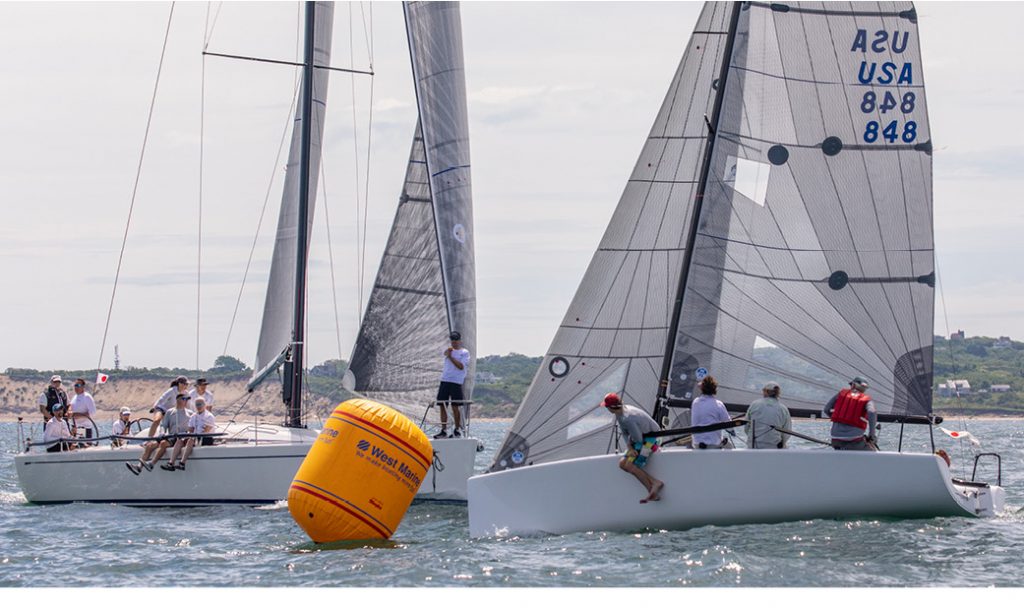When you get near the top of the first beat, think ahead about the mark you are just about to round. Is it a temporary, inflatable tetrahedron or a permanent, bulletproof government buoy? Each type of mark has its own particular characteristics that you must consider in order to have a fast, efficient rounding. Here are some things to think about for the two most common types of marks.

As you get closer to the windward mark, you often encounter lots of boats and close tactical maneuvers. It’s easy to get caught up in traffic and lose many places. If you want to avoid this and round the mark in good shape, keep your head out of the boat. There are many things to consider at this point, and you can’t afford to focus only on what’s happening inside your own boat. © Stephen R Cloutier
Inflatable marks
• There is often a lot of anchorline scope on the windward side of the mark, so be careful of your keel, centerboard and rudder. This is a particular concern when you have a falling tide (which creates more scope) or conditions that push the mark to the end of its anchorline (e.g. strong breeze or current aligned with the wind).
• These marks spin, swing and rock a lot with the wind and waves, so don’t get too close to them (e.g. be careful when you ease your boom out to bear off).
• Inflatable marks are also affected by wind shadows, which is why they some- times appear to move toward you when you pass close to windward of them.
• Watch out for two things that happen occasionally with inflatable marks: 1) they may drag their anchor and drift; or 2) they may get hooked by other racing boats and dragged to leeward.
• You can’t find these marks on any chart, but you can often locate them by watching where the mark-set boat goes or by looking for a windward mark “stake boat.”
• Large inflatables often look closer than they really are.
Permanent marks
• The ground tackle goes straight down under the buoy, so you don’t have to worry about snagging it with your blades.
• These buoys will not change position, so don’t worry about drifting or dragging.
• Buoys like this typically mark a shoal area, so they are often in a spot where there is a transition from stronger to weaker current.
• Many government navigational aids have lights and/or bells, so they’re easier to find in reduced visibility.
• These buoys are located accurately on charts, so on bigger boats it’s easy to plot your course to the mark using GPS and/or compass bearings.
• The race committee cannot move these marks, so you don’t have to worry about a change of course.
• Since the RC can’t move these, they will often be slightly out of position and thus will produce windward legs or runs that are skewed (i.e. one tack or jibe is longer than the other).
• These marks do not move around much in puffs, wind shadows or waves. These buoys are usually pretty solid, so it’s not a great idea to hit them. ■
This article originally appeared in David Dellenbaugh’s Speed & Smarts, The newsletter of how-to tips for racing sailors. If you want to sail faster and smarter, log onto SpeedandSmarts.com.
A resident of Easton, CT, Dellenbaugh was tactician and starting helmsman for America3’s successful defense of the America’s Cup in 1992. He’s a Lightning World Champion, two-time Congressional Cup winner, seven-time Thistle National Champion, two-time winner of the Canada’s Cup, three-time Prince of Wales U.S. Match Racing Champion, and a winner of the U.S. Team Racing Championships for the Hinman Trophy.




